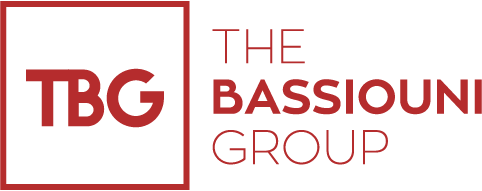Morocco’s Renewable Leap: How the Kingdom is Powering a Sustainable Future
Introduction
Morocco is positioning itself as a global leader in renewable energy, leading the way as one of Africa’s most significant solar energy sources. This is more than simply an energy success for a nation like Morocco, which faces semi-arid climates, increasing water stress, and a significant reliance on imported fossil fuels; it's a strategic turning point for the country's future. By pioneering large-scale solar projects and innovative renewable policies, Morocco is setting an example for its regional neighbors, becoming a leader in the MENA region’s green transition and demonstrating how strategic innovation and policy can drive a sustainable future.
Morocco’s Renewable Energy Revolution
1- One of the premier renewable energy projects is the Noor Ouarzazate Solar Complex. It has supported Morocco's renewable energy goals and is one of the biggest concentrated solar power (CSP) plants in the world. Due to Morocco's high irradiation potential (≈5 kWh/m²/day), the country's solar energy capacity has increased significantly, according to current data (solar rose from 35 MW in 2012 to ~934 MW by 2024 in some estimations).
2- Another important component is wind power. Morocco is one of Africa's pioneers in this field, with installed wind capacity of more than 2 GW as of 2024. For instance, turbines are being used to feed into the national grid in coastal and desert regions with wind speeds of up to ~10 m/s.
Aiming High: by 2030, Morocco wants to have at least 52% of its installed electricity capacity come from renewable sources. This challenging goal is both pragmatic and symbolic—practical in lowering dependency on imported energy and symbolic in showcasing leadership.
Government Policies and Strategic Vision
The national renewable energy plan (also known as the Moroccan Solar Plan) and its more comprehensive "Generation Green" and water/irrigation policies serve as the foundation for Morocco's approach. Clean energy incentives, such as those that facilitate private investment and favorable regulatory frameworks (such as statute 13-09), are assisting in the unlocking of both domestic and foreign resources (maghrebi, 2025). Moreover, Morocco has collaborated with international organizations: the World Bank, Food and Agriculture Organization (FAO), and others support climate-smart agriculture, water-efficient irrigation, and renewable energy integration.
Morocco’s approach positions it as a climate action leader in Africa, aligning with global agreements (e.g., the Paris Agreement) and broader green growth objectives.
Innovation Beyond Energy
1- Given climate pressures and water scarcity, Morocco is adopting smart water solutions: desalination plants, water transfer projects, drip irrigation, and improved governance (Assahifa, 2024). One example: the expansion of water-basin interconnection schemes and the push to free up conventional water for irrigated agriculture through alternative sources.
2- Agriculture is adapting: programs to expand no-till farming, organic agriculture, soil and water conservation have been launched. The World Bank’s “Transforming Agri-food Systems Program” (US$ 250 million) aims to improve climate resilience in Morocco’s agri-sector.
3- In many regions farmers are deploying IoT-based irrigation systems, real-time soil/moisture sensors, and renewable energy-driven pumping. These innovations underscore how Morocco is leveraging tech to tackle its environmental challenges.
Key Challenges and Opportunities
Morocco faces several key challenges as it continues its renewable energy transition. Financing remains a central hurdle, as sustaining long-term investment for large-scale renewable projects requires managing high initial costs and ensuring consistent funding. Additionally, the water-energy nexus poses a persistent challenge: balancing the country’s growing energy demand with ongoing water scarcity and the significant energy requirements of desalination efforts. Despite these obstacles, Morocco’s future holds promising opportunities. The expansion into green hydrogen production could position the country as a major clean energy exporter to Europe and regional partners. Meanwhile, advancements in smart grids and energy storage will enhance reliability and efficiency across the power network. Finally, strengthening regional partnerships—particularly with the European Union and African nations—offers Morocco the chance to deepen technological cooperation and establish itself as a renewable energy hub for the region.
Conclusion
Morocco has achieved a remarkable transformation: from heavy reliance on imported fuels to becoming one of the MENA region’s renewable energy leaders. Its success spans solar and wind deployment, supporting water- and agriculture-sector innovation, and embracing sustainable growth. For countries facing similar climatic and economic challenges, Morocco demonstrates that bold policy, strategic investment and cross-sector innovation can combine to build a sustainable future.


